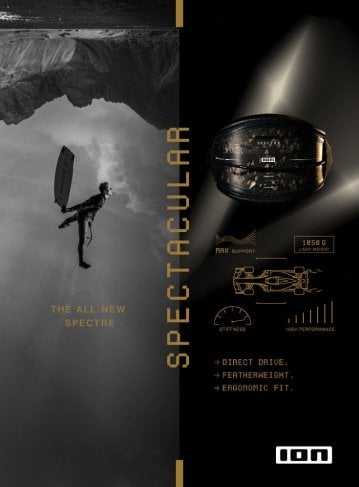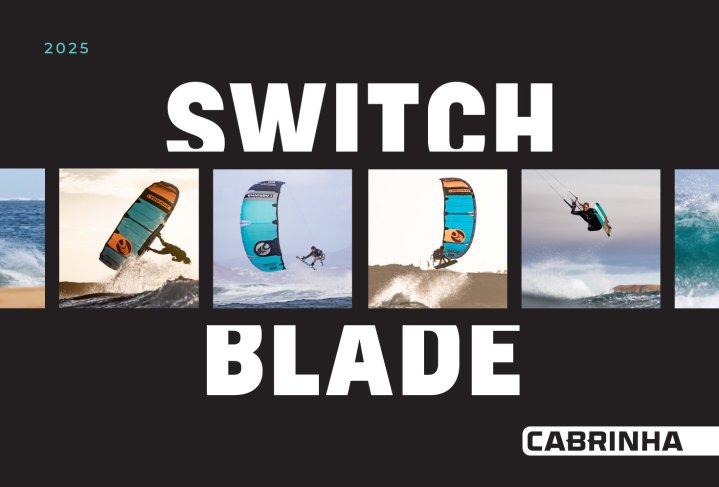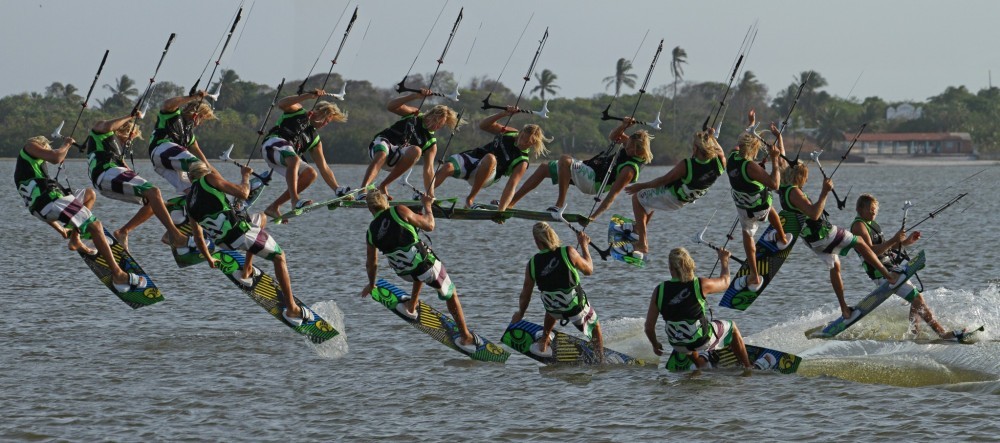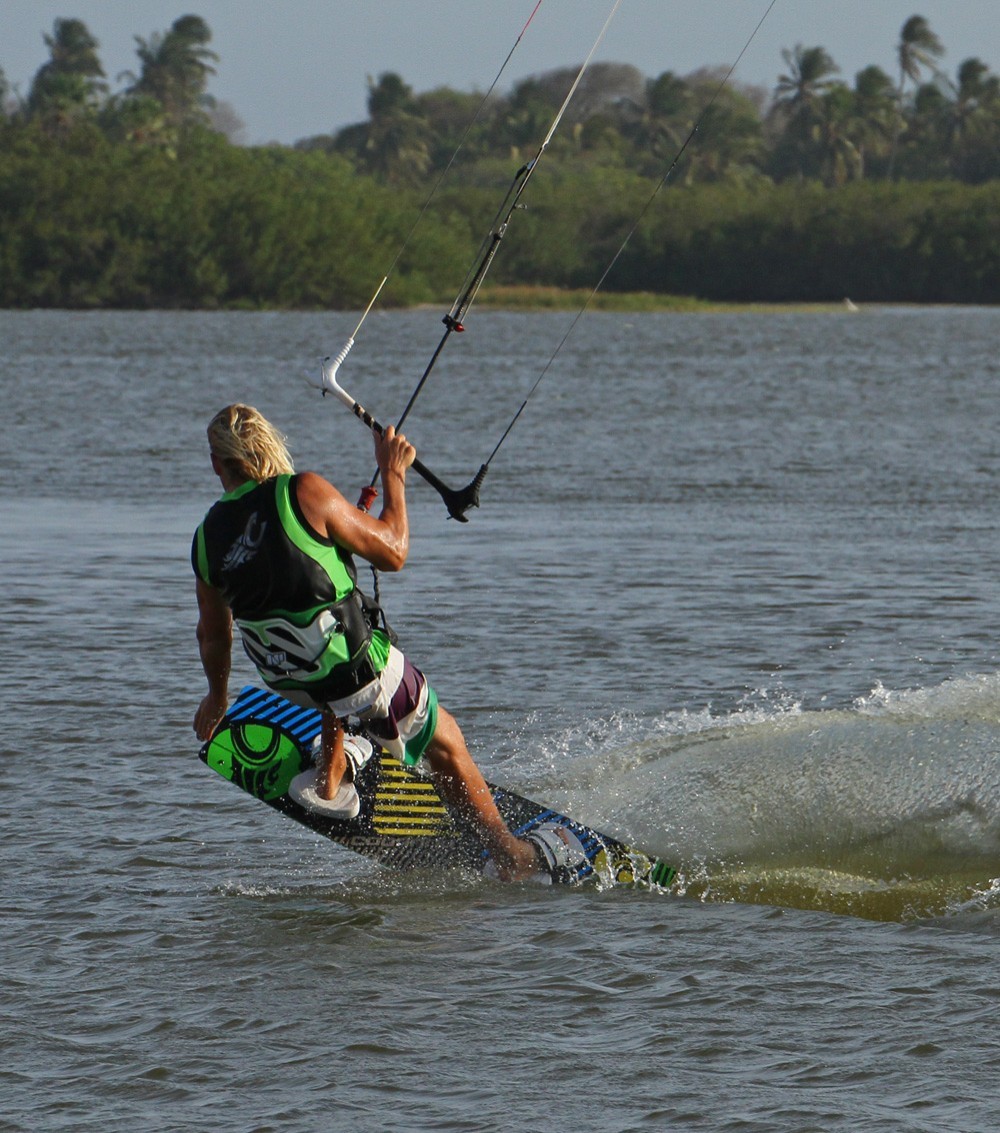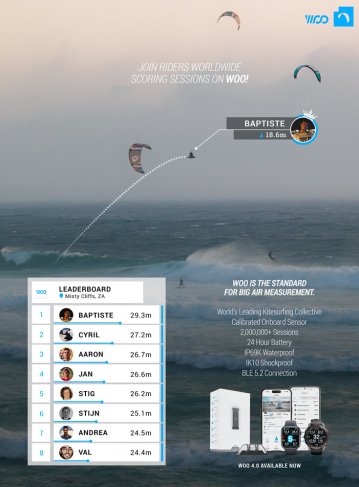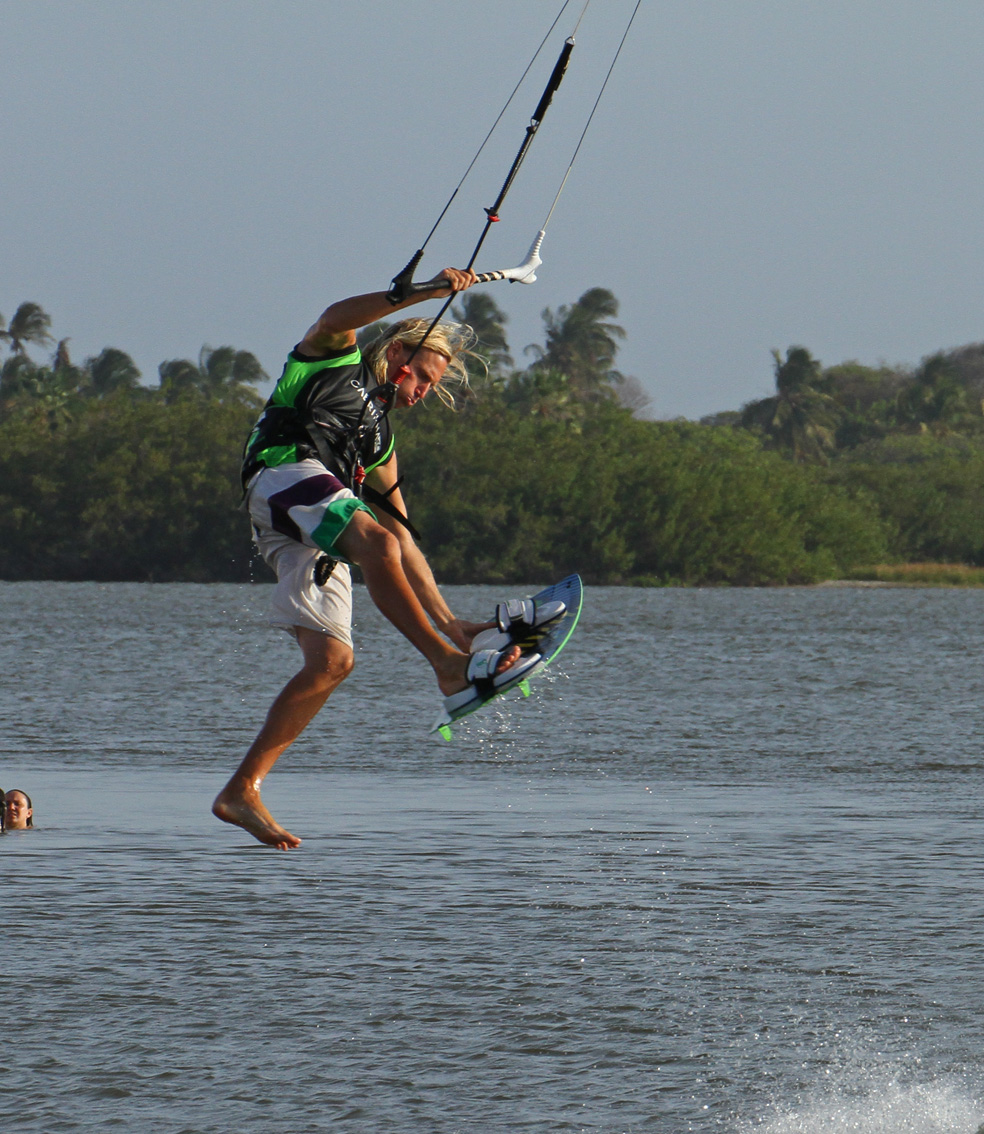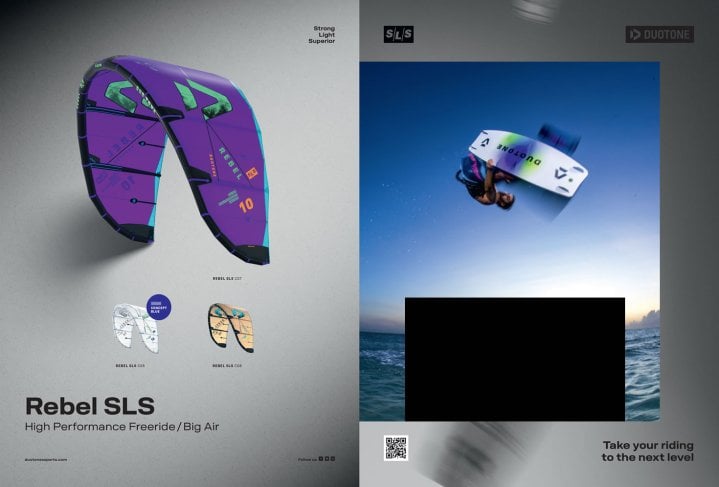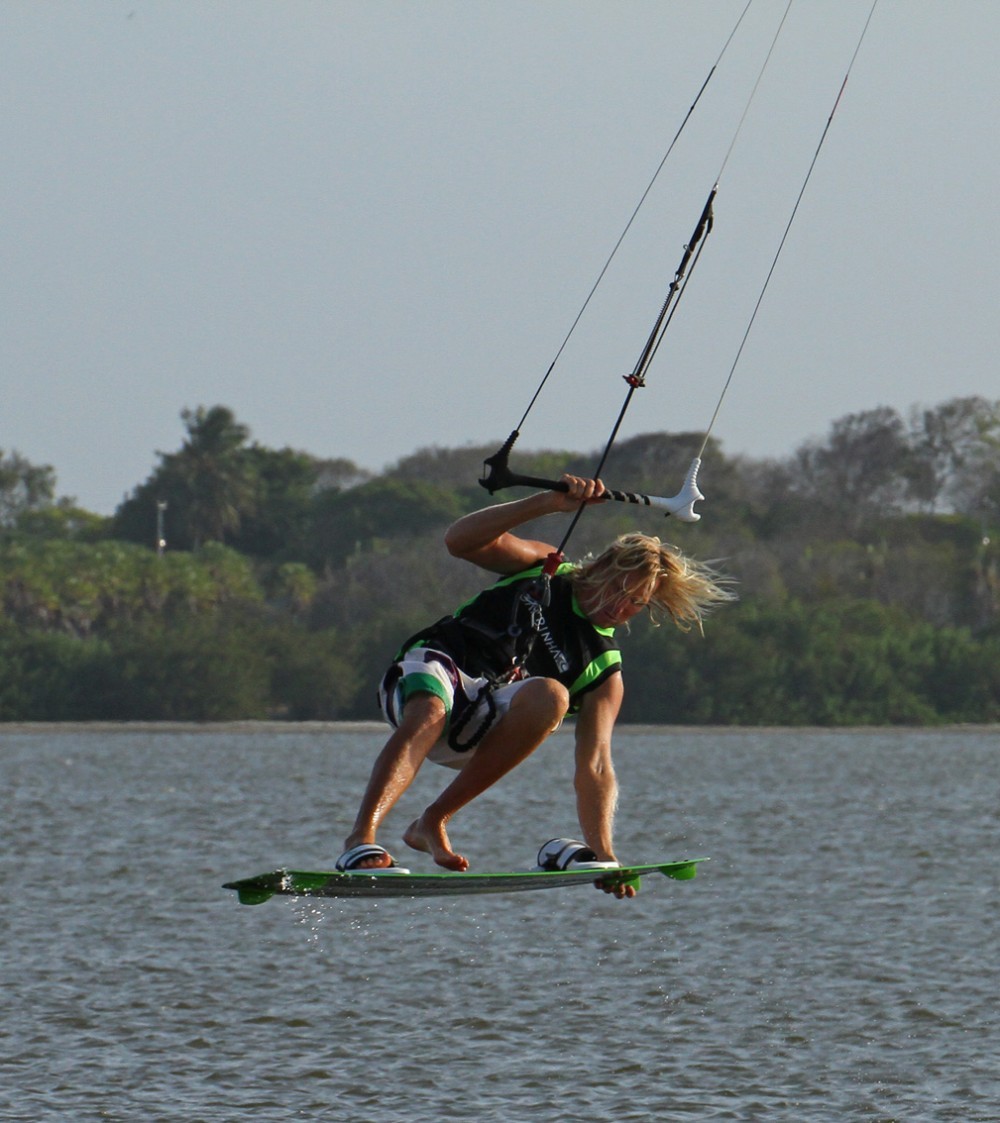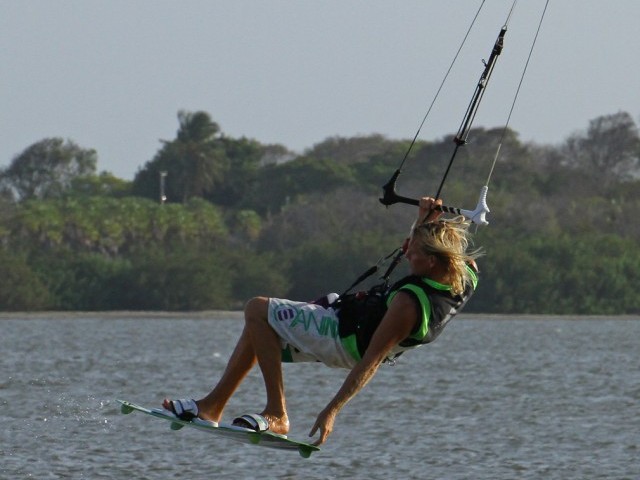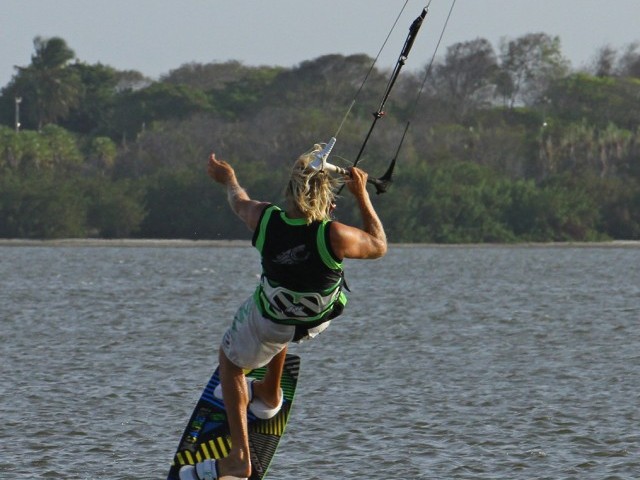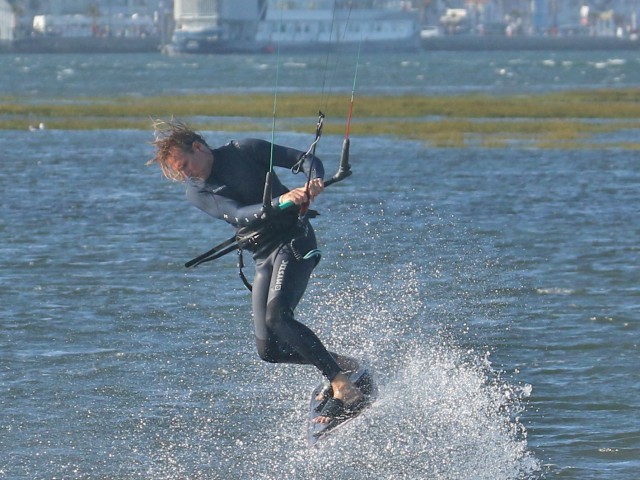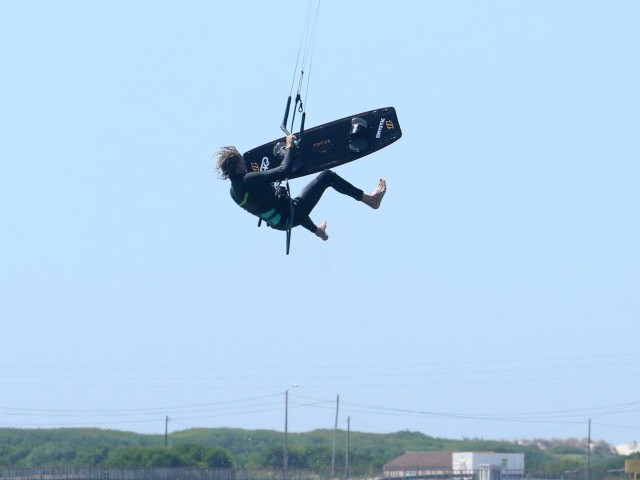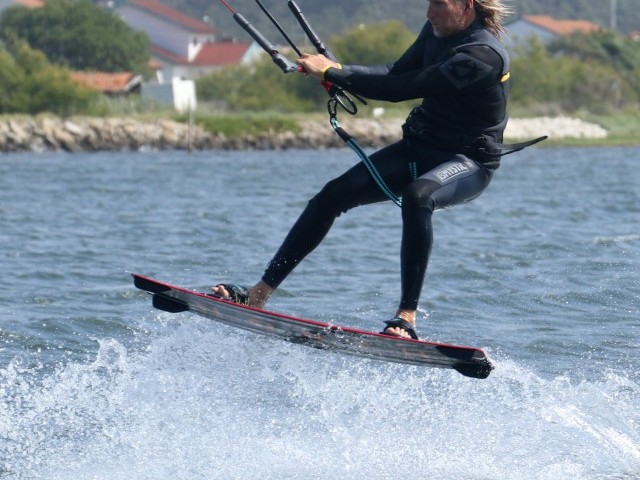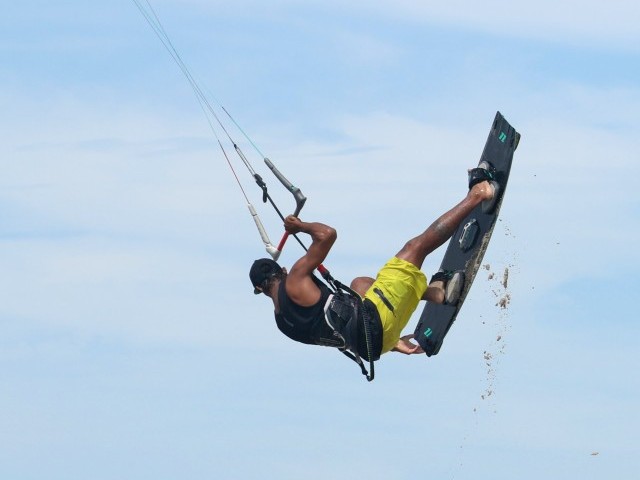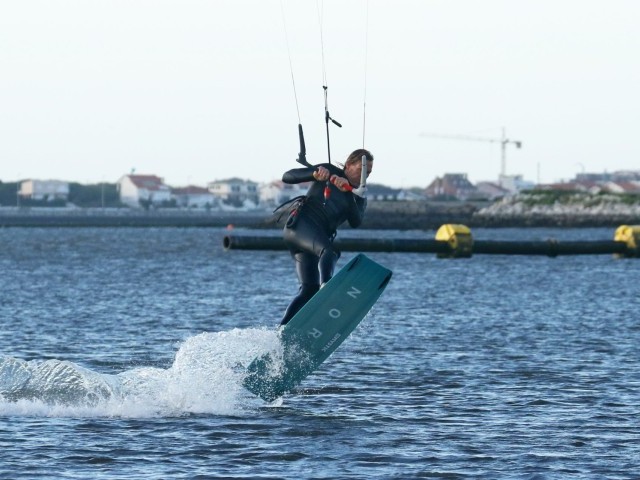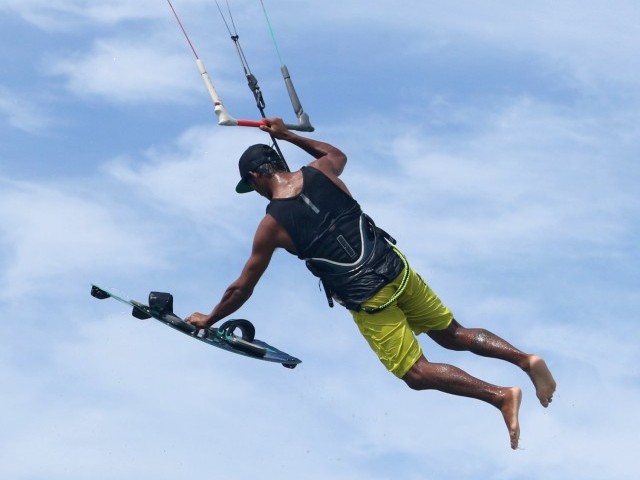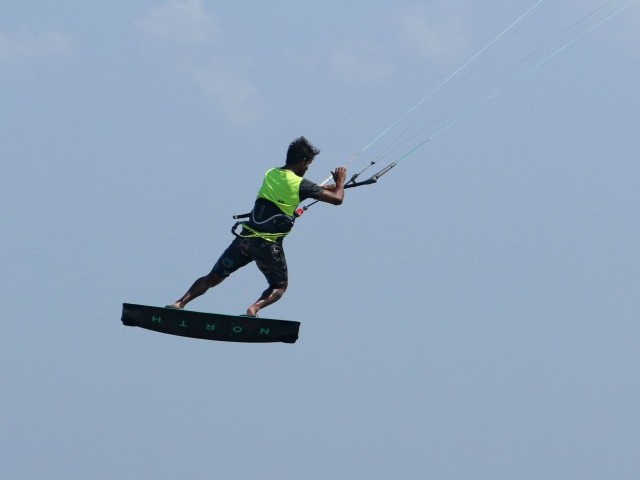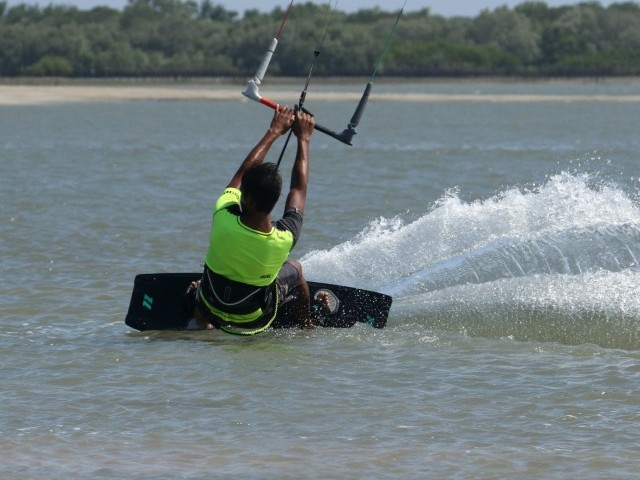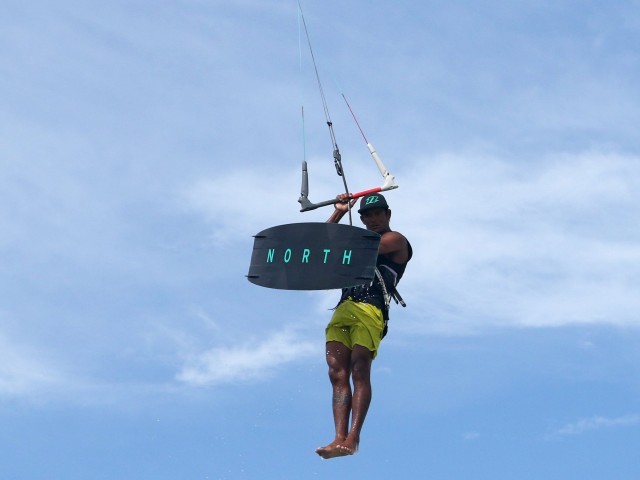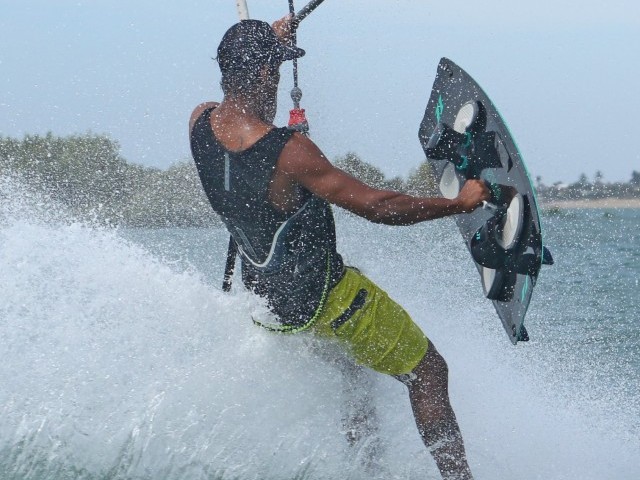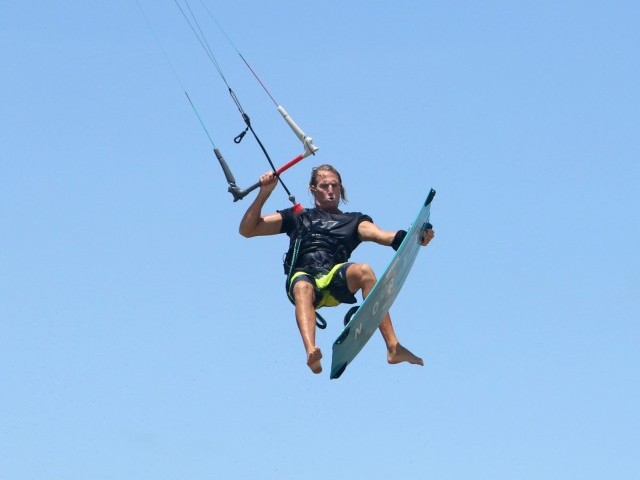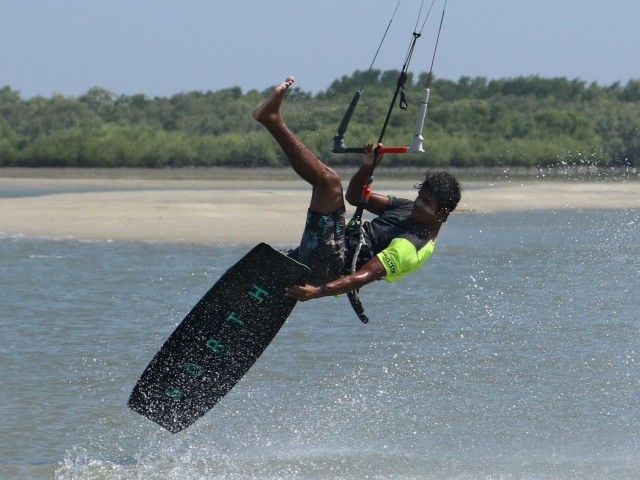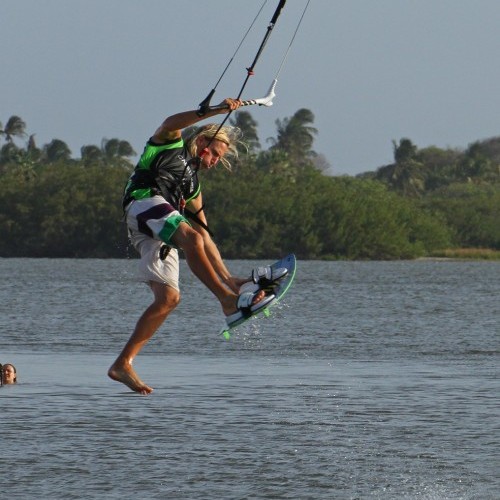
One Foot Front Loop Transition
Technique / Advanced
Introduction
This move is a bit of a classic from the archives. Reminiscent of huge four line kites, powered up with the bar wedged against the knot of the oh so effective trim strap, solid no flex mutant strapped onto your feet whilst aimlessly trying to snap your ankles, all the while hoping not to dump the kite lest you need to hold your breath longer than the great Houdini and swim as fast as Michael Phelps to have a chance of re-launching it.
Anyway enough nostalgia, the point being this is a pop transition so you won’t have much chance of steering the kite whilst rotating and sneaking your foot out, so timing will be everything. What should you concentrate on?
The Take Off
Ideally your goal with a pop transition is to land it with a diving kite without the need to add a late kite loop, as the later is really just a way of saving a mistimed attempt. This means that you need to pop up off the water earlier than you think and pretty hard, as this is what’ll give you your height. You need to keep tension on the lines to support you and stop the kite drifting back too far, and you’ll need to keep the kite sat fairly still above you whilst you pendulum out and swing back to land.
For his take off Christian has checked his speed by edging hard upwind, as if he comes in too fast he will swing too much. He has moved the kite up to twelve with his back hand centred on the bar and keeps the bar in to get the lift as early as possible before the kite gets to 12. As soon as the kite starts to pull Christian stamps down hard off his back foot and pops up and forward into his rotation, whilst already reaching forward for the grab (got to get the foot out early). Final point to note is that Christian does not yet turn his head for the rotation, as he doesn’t want to spin quickly as this will make the one-foot harder.
Foot Out
Taking your foot out quickly and effortlessly will help no end, so it may be worth loosening your strap slightly. It will also help if you’re accustomed to this action, so at least run through it numerous times on land, but better still have the one footed jump in the opposite direction nailed, as the movement is exactly the same as a tail grab one foot that way. Here it’s a nose grab, but realistically you should grab the heelside edge of the board somewhere between the strap and the fin. Hold the board up with your toes pointing skywards, and pull your foot out and down to avoid the foot sticking.
Christian is looking at his grab and the foot strap, which makes both taking the foot out and getting it back in quicker, and this is the main reason for not throwing your head around over your back shoulder on take off. If you feel confident try and push your foot down towards the water to straighten your leg for extra style points.
The Rotation
You can see in the photo that even though Christian is focused on the strap he is still rotating, although slowly, from throwing his shoulder down towards the nose of the board on take off. As soon as he feels his back turning towards the water it’s time to get the foot back in. Even though the kite gives some hang, as a pop trick you won’t have much time in the air, so as soon as you turn past 90 degrees you’ll need to speed things up if you intend to land facing the right way with two feet in the straps. Christian holds the board away at arms length, which gives him enough room to lift his leg and get his foot above the board, whilst looking at the strap and keeping the bar in for support.
Foot In
There is no point in attempting to land until your foot is in, and as you can see here even though Christian is swinging out under the kite as a result of keeping the bar in his concentration is focused on getting the foot in. It will be tempting to look around as you feel the kite pulling gently from behind you, but don’t be put off, get the foot jammed in and then you’ll be ready.
Landing Gear Down
As soon as his foot is in Christian releases his grab and turns his head and shoulders to look around towards downwind. At the same time Christian pulls on his hand to dive the kite, and as the power comes on it will pull him the rest of the way around his rotation and hopefully he’ll drop down into a perfect tail first landing. As log as you get your head around and dive the kite the rest will be surprisingly automated. If the kite has drifted to far back in the window you will need to loop it as you land to stop you sinking!
Top Tips
For your first attempts a bigger kite will make life considerably easier as it won’t move so quickly and it’ll give you a lot more float and therefore time to rotate slowly whilst you slide your foot quickly out and in.
It will make a lot of sense to master the nose grab front loop transition first as then it is “just” a matter of adding and timing the foot as opposed to learning a whole bunch of new skills at the same time. We covered the grab variation in issue 31.
Do make sure you give yourself plenty of space and some deep water, as at first it s likely that you’ll let the kite drift too far, in which case you’ll get ceremoniously dropped into the water, which won’t hurt unless it’s only a few centimetres deep.
Have a look at the Sequence and Videos.
Common Problems
The real issue on these pop transitions is kite positioning, and coming out with the kite high enough that you can dive it for power. The opposite from perfect is the kite swinging back as you pendulum forward, resulting in you dropping in and the kite fluttering down at the edge of the window behind you. To counter this you must keep the bar in whilst you drift the kite up. Start with the kite no higher than 1 or 11, give it a jab up and pop immediately. You can let the bar out slightly at the apex but there is already enough to think about.
Keystones
- Kite not too high.
- Pop Early.
- 1 Foot immediately.
- Foot In then turn head.
- Dive and look down wind.
This technique article was in Issue 38 of IKSURFMAG.
Related
By Christian and Karine
Christian and Karine have been working together as a coaching team, running improver to advanced kitesurfing clinics since 2003.




